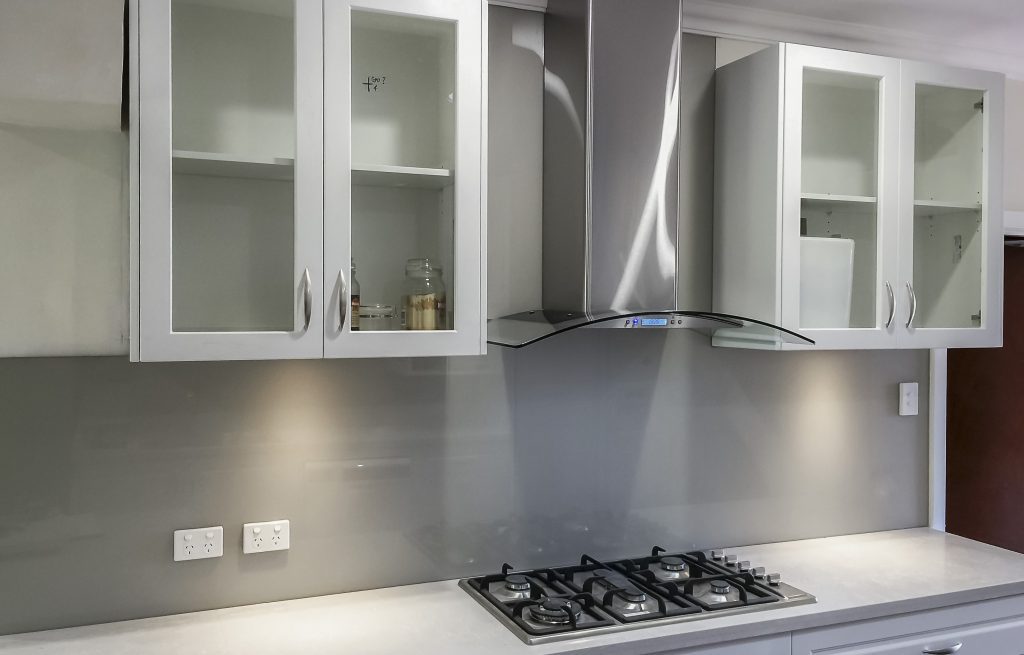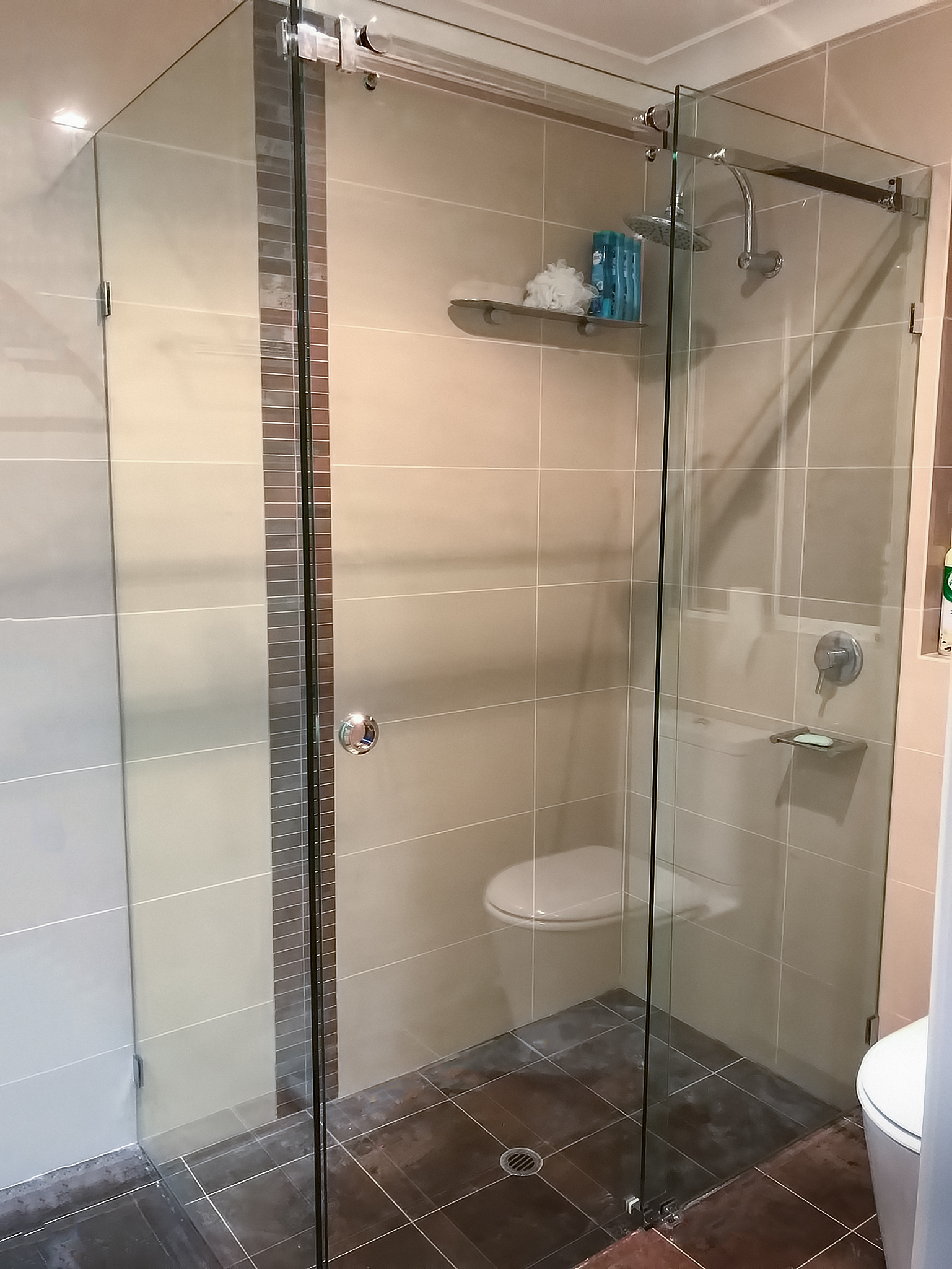
Glass splashbacks are a popular choice for kitchens due to their sleek appearance and easy maintenance. But one question that often arises is whether glass splashbacks are heat resistant. In this comprehensive guide, we will delve into the world of glass splashbacks and explore their heat resistance properties.
Understanding Glass Splashbacks
Before we dive into the topic of heat resistance, let’s first understand what exactly a glass splashback is. A glass splashback is a protective panel that is installed behind the stove or countertop in a kitchen. It serves the purpose of protecting the wall from splatters, stains, and heat generated during cooking.

The Role of Toughened Glass Splashbacks in a Kitchen
In addition to their practical use, a glass splashback plays a vital role in enhancing the aesthetics of a kitchen. They come in a variety of popular colours and designs, allowing homeowners to add a touch of style and personality to their kitchen space. Not only do glass kitchen splashbacks provide a seamless and modern look, but they also reflect light, making the kitchen appear brighter and more spacious.
When it comes to choosing the right glass splashback for your kitchen, the options are endless. From vibrant and bold colours to subtle and sophisticated designs, there is a glass splashback to suit every individual’s interior design taste and style. Whether you prefer a sleek and minimalist look or a more eclectic and artistic approach, glass splashbacks offer endless possibilities for customization.
One of the key advantages of tempered glass splashbacks is their easy maintenance. Unlike traditional tiled splashbacks, a glass kitchen splashback has a smooth and non-porous surface, making it resistant to stains, low maintenance and easy to clean. A simple wipe with a damp cloth is usually all it takes to remove food splashes and stains to keep them looking pristine and shiny.
Furthermore, glass splashbacks are known for their durability and heat resistance. Unlike acrylic kitchen splashbacks and non toughened glass splashbacks, a toughened glass splashback can withstand high temperatures, making them an ideal choice for areas near stoves and cooktops. This heat resistance not only protects the kitchen walls from damage but also ensures the longevity of the glass splashback itself.
Another interesting aspect of glass splashbacks is their ability to create a sense of depth and dimension in a kitchen or bathroom. The reflective properties of glass can make even the smallest of kitchens appear larger and more open. This optical illusion is particularly beneficial for those with limited space, as it can create a more spacious and inviting atmosphere.
In addition to their functional and aesthetic benefits, glass splashbacks are also environmentally friendly. The production of glass requires less energy compared to other materials, making it a sustainable choice for eco-conscious homeowners. Furthermore, glass is a recyclable material, which means that at the end of its lifespan, it can be repurposed rather than ending up in a landfill.
Overall, glass splashbacks are a versatile and practical addition to any kitchen. With their ability to protect walls, enhance the visual appeal and withstand high temperatures, they are a popular choice among homeowners. Whether you are looking to revamp your kitchen or simply want to add a touch of elegance, glass splashbacks provide the perfect solution for many kitchens.

The Science Behind Heat Resistance
Heat resistance is a fascinating topic that involves various factors and materials. Understanding what makes a material heat resistant can help us design and develop products that can withstand high temperatures and protect us from potential hazards.
What Makes a Material Heat Resistant?
Heat resistance is determined by several key factors that interact with each other to provide the desired properties. One of the primary factors is the material’s melting point, which refers to the temperature at which it changes from a solid to a liquid state. Materials with high melting points, such as metals like tungsten and carbon compounds like graphite, can withstand extreme temperatures without losing their structural integrity.
Another important characteristic is thermal conductivity, which measures how well a material can conduct heat. Materials with low thermal conductivities, such as ceramics and certain polymers, are excellent heat insulators. They prevent the transfer of heat energy and can protect other components from getting damaged by high temperatures.
Furthermore, the coefficient of expansion plays a significant role in heat resistance. This coefficient quantifies how much a material expands or contracts when exposed to temperature changes. Materials with low coefficients of expansion, like stainless steel and some alloys, are less likely to crack or deform when subjected to rapid temperature fluctuations.
The Heat Resistance of Glass
When it comes to heat resistance, glass stands out as a remarkable material due to its unique molecular structure. It is composed of silica (silicon dioxide), soda ash (sodium carbonate), and limestone (calcium carbonate), which are carefully selected and fused together at extremely high temperatures to form a solid, durable material.
The fusion process involves heating the raw materials until they reach a molten state and then cooling them rapidly to create a solid structure. This rapid cooling, known as quenching, locks the atoms in a specific arrangement, resulting in a material that can withstand heat without melting or deforming.
Additionally, the presence of certain additives during the manufacturing process can further enhance the heat resistance of glass. For example, boron oxide can be added to create borosilicate glass, which has even higher resistance to thermal stress. This type of glass is commonly used in laboratory equipment, cookware, and high-temperature lighting applications.
It’s worth noting that while glass can withstand high temperatures and is highly heat resistant, it does have its limits. Extreme temperature changes or prolonged exposure to very high temperatures or an open gas flame can cause glass to crack or shatter. However, compared to many other materials, glass is an excellent choice for applications that require heat resistance.
In conclusion, the science behind heat resistance involves a combination of factors such as melting point, thermal conductivity, and coefficient of expansion. Understanding these principles allows us to select and design materials that can withstand high temperatures and ensure the safety and reliability of various products and applications.

Is Glass Splashback Heat Resistant?
The Heat Resistance of Different Types of Glass Splashbacks
Glass splashbacks come in various types, each offering different levels of heat resistance. Toughened glass, also known as tempered glass, is the most heat resistant option. It undergoes a special heating and rapid cooling process that strengthens the glass and makes it highly resistant to thermal stress. Laminated glass, which consists of multiple layers of glass with an interlayer, also offers good heat resistance.
However, it is important to note that not all glass splashbacks are equally heat resistant. Ordinary annealed glass, for example, should not be used as a splashback behind a gas stove or cooking area or any other heat source, as it is more prone to cracking when exposed to rapid temperature changes.
Factors Affecting the Heat Resistance of Glass Splashbacks
While the type of glass used plays a significant role in determining the heat resistance of a splashback, other factors also come into play. The thickness of the glass and the quality of the installation can affect how well the splashback can withstand heat. Thicker glass tends to have higher heat resistance, while a properly installed splashback ensures even distribution of heat, reducing the risk of thermal stress and cracks.
Benefits of Using Heat Resistant Glass Splashbacks
Safety Benefits
One of the foremost benefits of using heat resistant glass splashbacks is safety. With their ability to withstand high temperatures, they provide a reliable barrier against heat and prevent potential accidents or injuries. Heat resistant glass splashbacks offer peace of mind when cooking on a hot stove or using intense heat for culinary purposes over other alternatives such as acrylic splashbacks.
Aesthetic Advantages
In addition to safety, heat resistant glass splashbacks offer aesthetic advantages. They are available in a wide range of colours and designs, allowing homeowners to customize their kitchen to match their personal style. The reflective properties, polished edges and smooth finish of glass also help to create a sense of depth and brightness, making the kitchen space appear more visually appealing.

How to Maintain and Care for Your Glass Splashback
Cleaning Tips for Glass Splashbacks
Maintaining the pristine appearance of a glass splashback is relatively easy with the right cleaning techniques.
To remove grease and food splatters, it is recommended to use a mild detergent or glass cleaner and a soft cloth or sponge. Avoid using abrasive materials or harsh chemicals that can scratch or damage the glass surface. Avoid using abrasive cleaners like brushes with wire wool or hard bristles, as this can scratch the glass splashback. Regular cleaning will not only keep your glass splashback looking great but also help maintain its heat resistance properties.
Precautions to Avoid Damage
While top quality toughened glass splashbacks are heat resistant, it is essential to take certain precautions to avoid potential damage.
Avoid placing hot pots or pans directly on the toughened glass splashback surface, as extreme temperature changes can cause thermal stress. Always use trivets or heat-resistant pads to protect the glass from direct contact with hot objects. When cleaning the splashback, gently wipe the surface instead of scrubbing vigorously to prevent scratches or damage.
In conclusion, glass splashbacks can indeed be heat resistant, depending on the type of glass used and proper installation techniques. Heat resistant glass splashbacks offer both safety and aesthetic benefits for kitchens. By understanding their heat resistance properties and following proper maintenance and care guidelines, homeowners can enjoy the beauty and functionality of a glass splashback while ensuring its longevity.
To learn more about glass splashbacks or for a free onsite measure and quote for your residential or commercial property, contact Perth Splashbacks today.



